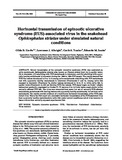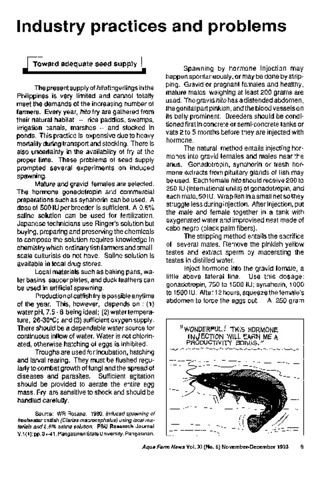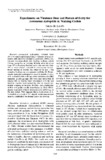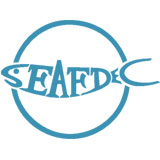Horizontal transmission of epizootic ulcerative syndrome (EUS)-associated virus in the snakehead Ophicephalus striatus under simulated natural conditions

Associated URL
www.int-res.comDate
2003Page views
610Metadata
Show full item recordCited times in Scopus
Share
Abstract
Natural transmission of the epizootic ulcerative syndrome (EUS) was conducted on naïve snakeheads Ophicephalus striatus (also known as Channa striata) kept (A) in aquifer water, (B) in lakewater, (C) cohabiting with EUS snakeheads in lakewater, and (D) cohabiting with apparently healthy snakeheads in lakewater during the 1994 to 1995 EUS season. The results showed that EUS-like lesions developed in 6 to 14 d among naïve snakeheads cohabiting with EUS snakeheads and with apparently healthy snakeheads in lakewater (Treatments C and D). Among naïve fish exposed to lakewater (Treatment B), similar lesions developed in 16 to 21 d, while naïve fish in aquifer water (Treatment A) did not develop EUS-like lesions. EUS signs began as Grade I (slight) lesions that gradually progressed to Grades III-IV (severe) 3 to 5 d from lesion onset, similar to the naturally affected EUS fish. The virus was recovered from some but not all naturally EUS-affected snakeheads, snakeheads with healing lesions and apparently healthy snakeheads, but not from naïve snakeheads. The results provide evidence of a waterborne horizontal transmission of the EUS-associated virus. This is the first report of a successful horizontal transmission of the EUSassociated virus from apparently healthy snakeheads to naïve fish under natural conditions and of virus recovery in tissue culture from naturally exposed experimental fish.
Suggested Citation
Lio-Po, G. D., Albright, L. J., Traxler, G. S., & Leaño, E. M. (2003). Horizontal transmission of epizootic ulcerative syndrome (EUS)-associated virus in the snakehead Ophicephalus striatus under simulated natural conditions. Diseases of Aquatic Organisms , 57(3), 213-220. https://doi.org/10.3354/dao057213
Subject
Taxonomic term
Collections
- AQD Journal Articles [1248]
Related items
Showing items related by title, author, creator and subject.
-
[Catfish aquaculture] industry and problems
Castaños, Milagros T.; Southeast Asian Fisheries Development Center, Aquaculture Department (Aquaculture Department, Southeast Asian Fisheries Development Center, 1993) -
Experiments on virulence dose and portals of entry for Aeromonas hydrophila in walking catfish
Lio-Po, Gilda D.; Albright, Lawrence J.; Leaño, Eduardo M. (American Fisheries Society, 1996)Aeromonas hydrophila, isolated from chevron snakehead Ophicephalus (=Channa) striatus affected with epizootic ulcerative syndrome (EUS), was injected intramuscularly into healthy walking catfish Clarias batrachus at varying ... -
Potentials of Kappaphycus striatum (Schnitz) and Gracilaria heteroclada Zhang (Ad Xia) to control the growth of luminous bacteria Vibrio harveyi
Tendencia, Eleonor; de la Peña, Milagros R. (University of the Philippines Los Baños, 2010)Different aquaculture species such as finfishes and bivalves have been reported to control the luminous bacterial disease of shrimp, usually caused by Vibrio harveyi. The use of seaweeds in shrimp culture system has ...



